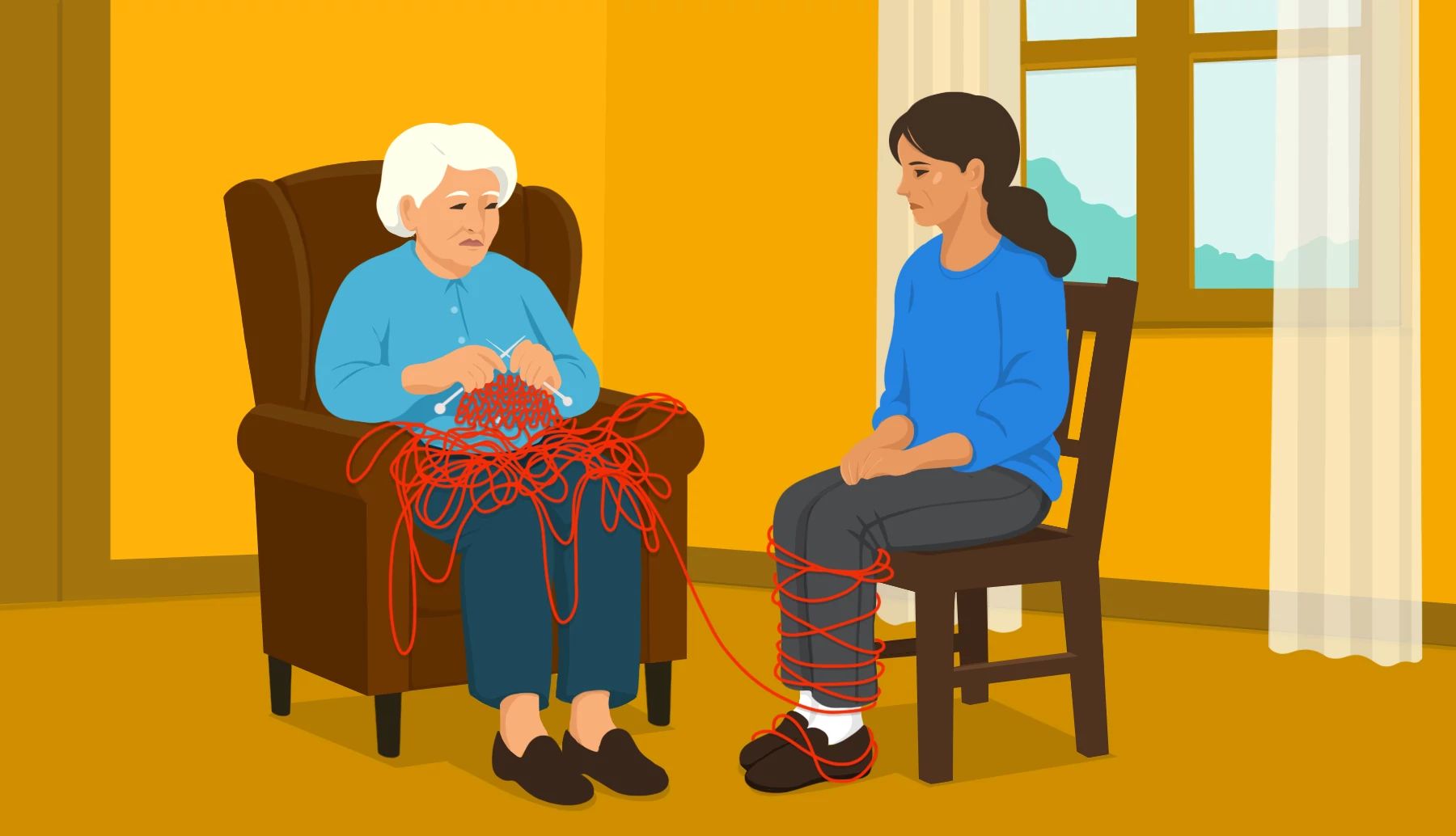AARP Hearing Center


Have you ever stepped out of your loved one’s room, or ended a phone call, and suddenly felt drained — your chest tight, heart racing or an unexplained wave of exhaustion?
It’s not in your head. Family caregivers can “catch” the emotions of those they care for, absorbing their anxiety, frustration or sadness without realizing it. This phenomenon is called secondhand stress.
What is secondhand stress?
Secondhand stress, also called secondary traumatic stress, is the emotional strain caregivers experience when they absorb the pain or trauma of someone they care for. Even though you’re not the one facing illness or trauma directly, being close to their anxiety, sadness or frustration can affect your emotions, your health and how you show up in the world.
“It’s not your trauma, but it becomes your stress,” explains Amy Goyer, author and AARP’s national family and caregiving expert. “You’re absorbing what they’re going through, especially if you’re empathetic by nature.”
Who is at risk?
According to Barbara Rubel, a caregiver trauma expert and author of Living Blue and But I Didn’t Say Goodbye, certain caregivers may be more vulnerable to secondhand stress due to personality traits, emotional sensitivities or life experiences, including those who:
- Are highly sensitive persons (HSPs), who process sensory information deeply, get easily overstimulated and feel emotions intensely
- Have a history of personal trauma
- Experience chronic worry or anxiety
- Struggle with low self-confidence in managing caregiving challenges
- Tend toward high agreeableness, often overextending themselves to help others
- Are socially withdrawn, limiting emotional support networks
- Lack resilience or coping strategies to manage emotional tolls
How secondhand stress shows up
Feeling tired or stretched thin is a normal part of caregiving. But secondhand stress goes deeper. Left unrecognized, it can take a serious toll on your physical and mental health.
Join Our Fight for Caregivers
Here’s what you can do to support family caregivers:
- Sign up to become part of AARP’s online advocacy network and urge lawmakers to pass legislation to save caregivers time and money.
- Find out more about how we’re fighting for you every day in Congress and across the country.
- AARP is your fierce defender on the issues that matter to people age 50-plus. Become a member or renew your membership today.
“Caregiving stress doesn’t just stay in your mind. It is stored in the body,” says Rubel. “Physical symptoms are the body’s way of expressing and holding on to the emotional strain of caregiving. This leads to exhaustion, disrupted sleep, headaches, digestive issues or even long-term health problems.”
Rubel shares some physical and emotional red flags that you may be absorbing too much stress:
In your body and mind:
- Trouble sleeping
- Headaches or stomach problems
- Racing heart
- Feeling numb or hopeless
- Fatigue that doesn’t go away
- Frequent negative thinking
- Unexpected emotional outbursts
In your day-to-day life:
- Feeling drained after visits or calls with your loved one
- Snapping at others over small things
- Avoiding visits or phone calls
- Stopping the activities you once enjoyed
- Feeling guilty for taking time for yourself
Tip: Ask someone close to you if they’ve noticed changes in your mood, energy or behavior. Sometimes others can see what we’re too overwhelmed to notice, notes Goyer.
A real-life wake-up call
Goyer remembers a moment, while caring for her mother, Patricia (who passed away in 2013), when she realized something wasn’t right. She found herself yelling at a lab technician on the phone — something she never does. “I got so angry. I was yelling at this person, which is not me. It’s not how I operate,” she recalls. “They put me on hold, and I thought, I can’t believe I’m yelling at this person — I’m so out of control.”
The trigger? A messed-up lab order for her mom’s chronic urinary tract infections (UTIs). The lab had made a mistake and was asking her to bring her mom back, something that was logistically and emotionally difficult at the time.
She realized that she wasn’t angry but afraid. “This is fear,” says Goyer. “I’m scared for Mom to have another UTI that doesn’t get treated. She had sepsis [a life-threatening condition caused by infection] before. I was afraid of the whole process — getting her around, having to take time off work, the whole thing.”
That moment was a red flag — not just for how overwhelmed she was but for how much of her mother’s emotional burden she was carrying and how she needed to make a change.


































































More From AARP
10 Ways Caregivers Can Improve Their Own Self-Care
Author reveals which strategies work best for her
How to Handle Memories of Trauma
These techniques can help caregivers cope with what they have witnessed
Exercising When You're Caring for Someone Else
How to make time for your own fitness needs